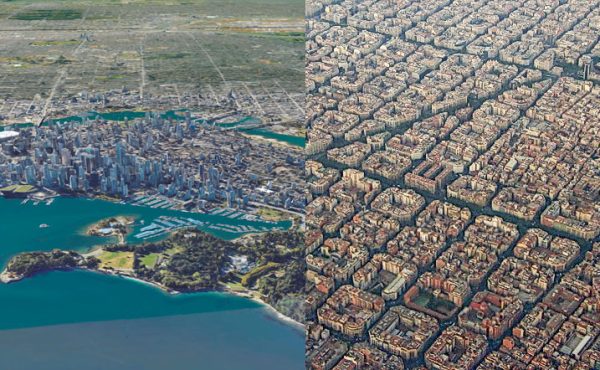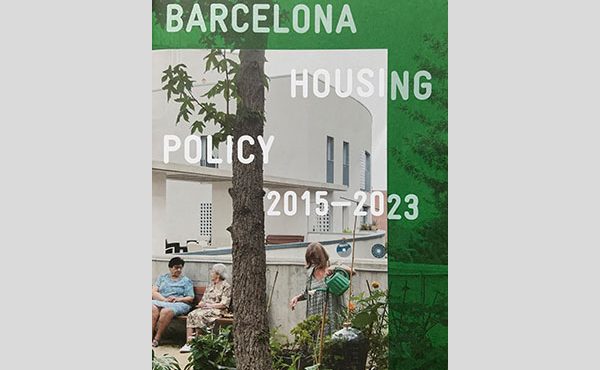
One of Vancouver’s greatest attributes is the environment in which it sits. The beauty and splendour of the mountains and ocean that are so intricately connected to the local culture are coveted worldwide. The diversity of wildlife, flora, and fauna supported by this environment makes our location that much more incredible.
The relationship between affordability and our environment is quite complex since both affect one another simultaneously. That is, our environment directly affects affordability, and affordability affects the environment. We will start by discussing the former.
As we all know, development patterns throughout Metro Vancouver are shaped dramatically by geology and geography. Following the natural human desire to follow the paths of least resistance, the Coastal Mountains, the ocean and the U.S. border cradle us all on the relatively flat part of our landscape.
As a result, the city expanded in a linear east-west band stretching from the shoreline through to the Fraser Valley and ends where mountains constrict further expansion—the District of Hope being the ultimate end of the line.
As one would expect, these constrictions – intensified by other human imposed restrictions, such as the Agricultural Land Reserve – serve to limit the land available for development.
Yet, despite the intuitive reaction to believe that such constriction automatically results in higher land values, the reality is more ambiguous. This is clearly seen with the experiments such as the Urban Containment Boundaries—UCBs, also known as Urban Growth Boundaries—of which Portland is the most well-known example.
For those unfamiliar with the term, UCBs are a regulatory and political construct delineating the boundaries of urban development. The reasons behind their creation are many and varied. However, the principal motivation behind this act is to prevent the gradual loss of agricultural lands while ensuring the cost-effective, efficient use of urban land through promoting compact, higher-density cities.
Accordingly, research supports the conclusions that development strategies such as urban containment do not increase housing prices. Consequently, the main determinant of housing prices is the rate of population growth and market demand from that growth rather than land constraints.
On the contrary, studies have found that low-density development actually increases housing prices over time. Despite lower land values at the fringes of urban centres, this is because the initial construction costs of adding infrastructure (road, services, etc.) to a neighbourhood are exponentially smaller than long-term maintenance costs. Simply put: building in suburbs is cheap but the long-term costs are big.
Thus, it becomes more costly, in real terms, to support a neighbourhood of low density where the costs are divided between fewer households, than in more compact urban areas. This does not even include the added costs associated with larger building footprints and increased transportation costs that often come with typical low-density neighbourhoods.
One main reason this is not readily reflected in most cities is that the more compact areas essentially subsidize low-density neighbourhoods through tax distributions. Simply put, true infrastructure and maintenance costs are masked through taxation.
Relating the latter to Vancouver, the mill rate set by City Council annually (and multiplied by the assessed property value to calculate the taxes each year) distorts infrastructural maintenance costs relative to the density – among other things. This, for example, eases the tax load on low-density Westside neighbourhoods that use the roads and services more intensely while increasing the tax burden on denser transit-oriented communities.
The ultimate result is that the positive effects of dense and compact living have a negligible effect on the affordability of the housing and, arguably, have the opposite effect, increasing the costs of housing beyond the reach of local households as prices simply respond to market forces and perceived demand.
This brings us to the second part of the relationship…how affordability directly affects our environment.
As discussed in The Costs of Unaffordability: Affordability and Diversity, the fact that housing is not attainable within the City has adversely affected the dispersion of families with children and essential service workers. This, in turn, has a direct linkage to increasing transportation emissions as these families must drive in from the urban fringes that are poorly serviced by transit.
Housing costs have major implications for transportation, with personal mobility the source of 14% of BC’s greenhouse gas (GHG) emissions. As greater numbers of low- and middle-income people move out of the city to seek affordable housing in suburban areas (or even out of Metro Vancouver entirely), long commutes contribute to both higher GHG emissions, environmental degradation, and lower quality of life.
It, thus, becomes evident that continuing to passively address affordability issues has severe environmental implications, beyond the social and economic ramifications discussed earlier.
Even more ironic are the implications of continuing to cater new developments to high-end clientele. It is well known that households with higher incomes have much larger ecological footprints than other income groups. Their higher wages simply opens up more options that allow them to avoid or curtail more environmentally sensitive decisions.
This was brought to an extreme in Mexico City, where the government imposed a regulation that restricted each car from driving on a specific day of the week. This policy was aimed at reducing traffic and air pollution and encouraging transit use. Shortly after being implemented, however, the wealthy population living at the fringes of the city found a way to bypass the system by buying an additional car.
All things being equal, the same phenomenon exists worldwide – albeit to varying degrees.
Locally, this is made manifest in the perverse possibility reality that low- and middle-income people who are more likely to bike or take public transit to travel around the city (especially with the rise in gas prices) are displaced by others who are more likely to drive. All in the name of making Vancouver a more “liveable and sustainable” city.
***
Other pieces in this series:
- The Costs of Unaffordability – Introduction
- The Costs of Unaffordability – Part 2: Affordability and Diversity
- The Costs of Unaffordability – Part 3: Affordability and Environment
- The Costs of Unaffordability – Part 4: Affordability in Vancouver
- The Costs of Unaffordability – Part 5: Epilogue
**
Erick Villagomez is one of the founding editors at Spacing Vancouver.




